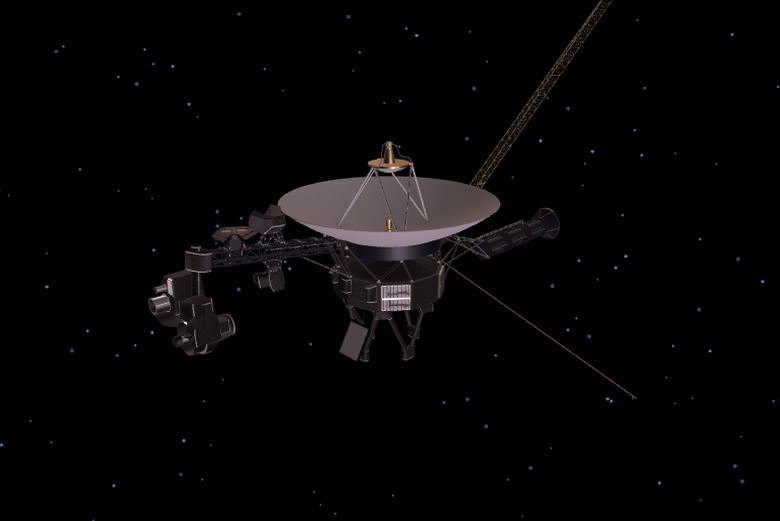Spare A Thought For Voyager 1 And 2, Which Have Been Hurtling Through Space For 40 Years
In late August and early September of 1977, NASA sent two messengers into space. Their extended mission, to travel as far away from Earth as they can, as fast as they can, has been in progress for decades, and will continue long after both you and I have pushed off from this mortal coil. They are Voyager 1 and Voyager 2, and for forty years they have been traveling over 30,000 miles per hour every second of every day, pushing farther out into the cosmos than any other manmade craft before them. Here's where they are now.
Voyager 2, which was actually launched before Voyager 1 (I know, this gets a bit confusing) is currently at a distance of 10.713 billion miles from the Sun. It's traveling at an estimated speed of 34,390 miles per hour. At that speed, you could travel from Los Angeles to New York City in just over three and a half minutes, but it's been cruising along for four decades but hasn't yet reached interstellar space.
Voyager 1, on the other hand, has. That's due to the fact that Voyager 1 is traveling at a slightly greater speed of roughly 38,026 miles per hour. It is currently located some 12.974 billion miles from the Sun, and has successfully broken free from our star's "bubble" called the heliosphere. Having passed that, Voyager 1 is now in interstellar space, where its fate will be determined solely by whatever it manages to run into.
At the moment, the best guess for what lies ahead for Voyager 1 is that it will visit the star called "AC +79 3888" which is some 17.6 light years away. It will take Voyager 1 roughly 40,000 years to reach that star. Voyager 2, on the other hand, has a much longer and more boring journey ahead of it. The craft is headed for the star Sirius, which it will reach in nearly 300,000 years.
